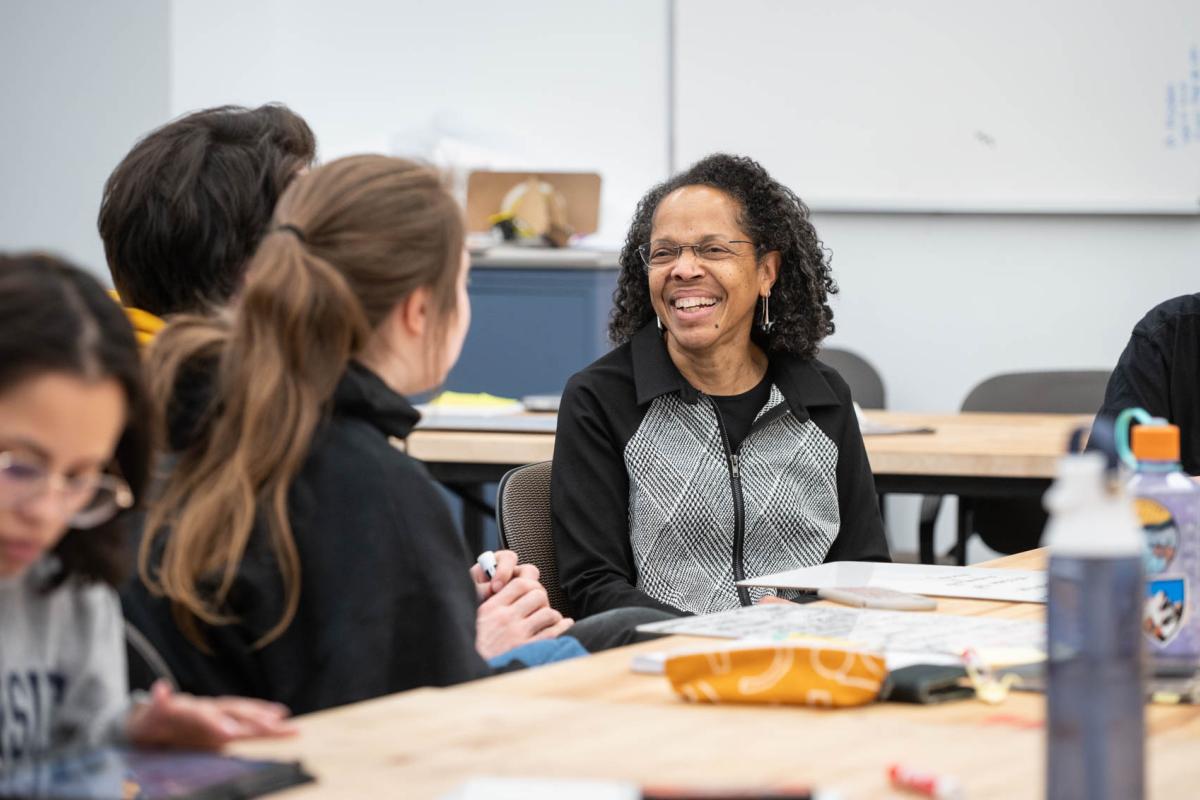NEWS: Groundbreaking NASEM report on racism in STEMM institutions offers pathways to structural change
February 14, 2023
To increase diversity, equity and inclusion in STEMM fields, higher education institutions and STEMM organizations should act to change their organizational cultures and environment, says a new report, “Advancing Antiracism, Diversity, Equity, and Inclusion in STEMM Organizations: Beyond Broadening Participation,” from the National Academies of Sciences, Engineering, and Medicine.
Dr. Gilda A. Barabino, President of Olin College and Professor of Biomedical and Chemical Engineering, co-chaired the NASEM committee that wrote the report, along with co-chair Susan Fiske, Eugene Higgins Professor of Psychology and Public Affairs at Princeton University.
The actions needed go beyond a focus on simply increasing the numeric participation of minoritized racial and ethnic groups, says the report. Removing barriers for entry and participation, while also implementing practices that convey belonging, will allow organizations to move from broadening participation by the numbers to fostering a culture of inclusion, thriving, and success.
“The concepts of antiracism, diversity, equity, and inclusion are not goals for which a simple checklist will indicate success,” said Dr. Barabino. “Rather, the goal is to create environments that focus on inclusive excellence, where all participants have access to educational and professional opportunities, feel included, and have the resources to actualize their full potential.

Dr. Gilda A. Barabino, President of Olin College, working with students in the classroom.
“STEMM organizations will require ongoing leadership, resources, and commitment to ensure that these values become part of an intentionally maintained organizational culture.”
Organizations should take active, intentional steps to dismantle the policies, practices, and cultures that confer power and privilege to white people over others. The report recommends that organizations follow a multi-tiered approach – at the levels of leadership, team, and individual – and identifies policies and practices that can be implemented at each level.
Individual level. Individual gatekeepers play an important role in determining who is and who is not included in STEMM by defining the skills, identities, and values necessary for individuals to persevere in these fields. The report recommends generating systems of accountability that can help identify behavioral patterns of bias, whether intentional or not, that impact hiring, admissions, promotion, tenure, advancement, and awards, and other factors.
Team level. While diverse teams perform better, simply having a numerically diverse team does not automatically result in positive performance outcomes, the report says. Conditions that foster inclusion are essential. Gatekeepers who manage teams, such as principal investigators and heads of research groups, should be intentional about creating team norms that centralize a positive climate in which all team members, including minoritized individuals, are supported, heard and respected.
Organizational and leadership level. Leaders, such as presidents and chief executive officers, have the unique opportunity to shape organizational culture and climate by (re)shaping the norms, values, policies, and practices that comprise culture and climate. To make large-scale change, leaders need to set forth an agenda that addresses the organization at multiple levels, with the appropriate resources in terms of person hours and funds. Leaders should review evaluation criteria and decision-making practices at critical points of access and advancement – such as in admissions, hiring and wages, start-up resource-setting, and promotion – and take action to redress both individual bias and discrimination and organizational processes that reproduce harm and negative outcomes for people from minoritized racial and ethnic groups.
“This report is written for those who aim for STEMM but encounter systemic obstacles—and for those in a position to remove the barriers and pave the way forward,” explain the co-chairs in the report’s preface.
“As the President of Olin College, a groundbreaking institution in its own right in the realm of engineering education, my colleagues at Olin and within the academies will continue to lead the way in dismantling barriers and constructing more equitable structures and practices,” said Dr. Barabino. “A brighter, more equitable future lays ahead of us. It will take everyone, at every level, to strive for it together.”
Dr. Barabino became the second president of Olin College of Engineering in 2020, two decades after its founding. Olin is dedicated to educating the next generation of engineering innovators who recognize needs, design solutions and engage in creative enterprises for the good of the world. Dr. Barabino is leading Olin forward in an exciting new direction, founded on the vision that engineering must be for everyone.
Under Dr. Barabino’s leadership and partnership within its community, Olin will focus on this strategic vision to advance equity within and through engineering education, in a way that benefits the long-term financial sustainability of the College.
Dr. Barabino is the president of the American Association for the Advancement of Science (AAAS), the world’s largest interdisciplinary scientific society. In advancing science, engineering and innovation, she and AAAS are committed to science for and by all and engineering for everyone.
The National Academies of Sciences, Engineering, and Medicine are private, nonprofit institutions that provide independent, objective analysis and advice to the nation to solve complex problems and inform public policy decisions related to science, technology, and medicine. They operate under an 1863 congressional charter to the National Academy of Sciences, signed by President Lincoln.